A Note on Offerings by Panchen Ötrul Rinpoche

(By Tsem Rinpoche)
I would like to share this teaching on Offerings by Panchen Ötrul Rinpoche with my students and friends as it would be most beneficial for us to know the significance of making offerings to the Three Jewels.
Making offerings to higher beings is to collect merits. Why collect merits? What type of merits? How does collecting merits benefit us? All these we need to know.
Giving offerings to a higher being allows us to make a direct connection and plant seeds of enlightenment in our mind to achieve it in the future when we practice. On a more worldly level, making offerings is a direct cause for creating wealth and purifying poverty. Knowing the meaning and reason behind making offerings to the Three Jewels is important to keep our faith stable. Through this knowledge, our enthusiasm to do dharma will be tremendous and tireless, which WILL then lead to inner transformation because all the obstacles that we face for Dharma is for a higher purpose.
There are no limitations to what can be offered on one’s altar. Traditionally, seven or eight bowls of water offering are set up on the altar. Seven bowls representing the seven steps Lord Buddha took when he took rebirth and proclaimed this will be his last life – it is an offering to reach that state. Eight bowls representing the five sensory offerings that we are attached to and we offer things we are attached to in order to free us from that very attachment; and the three extra bowls represent body, speech and mind, our total submission to the Dharma.
In general we can offer anything that pleases the five senses which are form, sound, taste, smell, and touch. The quality of the offering is very subjective, although we must always try to offer the best quality according to our means. One can offer the best quality but with lack of motivation, generate very little benefit from the action.
Offerings can be of many levels… it can be material, effort, and most importantly being consistent in Dharma centres. Any form of sponsorship to a Dharma centre – effort, money, time, etc… is extremely beneficial because it is through your compassion, generosity and sacrifice that the Dharma centre can continue to function as a place for people to make a connection with the Buddhas.
Always make offerings. If you’re a serious practitioner, then offerings are not an option but a necessity. It is not something you’ll only consider if you have spare cash to donate or extra time for volunteering. Make Dharma your main focus, because if you’re going to be cheapskate about it… then the outcome of your practice will be equally so!
May we always have the Dharma in our hearts.
Tsem Rinpoche
Offerings
Panchen Otrul Rinpoche
Offerings are the formal religious expression of the fundamental Buddhist virtue of giving. The perfection of giving, dana-paramita in Sanskrit, is first of the six or ten perfections. It encompasses every kind of generosity, whether it involves a gift to those higher than ourselves, such as deities in the merit field, or the poor or needy, who are worse off than we are.
In giving to a being in an equal or worse state than ourselves, we sacrifice something that belongs to us for the benefit of another. In giving to a being superior to ourselves, to our guru, a Buddha or bodhisattva, we perform an act of renunciation. As an altruistic deed, giving is a basis for acquiring merit. In Buddhist doctrine, the accumulation of merit leads to higher rebirth, and eventually to release from the sufferings of cyclic existence. In order to attain highest enlightenment, we must be able to give to a superlative degree, with perfect motivation, thus attaining the unsurpassable level of the perfection of giving.
Whether the physical offerings benefit the recipient or not, from a Buddhist practitioner’s point of view as a donor, they are essential means of reducing our attachment to the physical world. Attachment reinforces our notion of ourselves as real, independent selves to be satisfied by obtaining or clinging onto objects we desire. Making offerings accustoms the mind to giving and letting go of desirable objects. It serves to loosen our conception of a real and independent self. In this way, it contributes to our acquiring the essential wisdom realizing that all phenomena as empty of intrinsic existence. Without such realization we will not attain Buddhahood. The value of merit acquired from an act of giving depends on several factors: the motivation, the status of the recipient and the quality of the offering.
Motivation
Motivation or intent consciously or unconsciously precedes all our actions. The ultimate motivation for giving is to generate the causes for attaining enlightenment for the welfare of all sentient beings. The value of an act of giving closely corresponds to the quality of motivation. The narrower the intention, the smaller the merit. You may offer a bag of gold to a monastery, but if your real intention is just to show off, to acquire further wealth or a similar worldly motivation, the merit acquired may provide the desired result, but no more. If you give with a wish to attain liberation from cyclic existence, much greater merit will be generated. And if by giving you aspire to the ultimate attainment of Buddhahood for the benefit of all sentient beings, the merit you acquire will be limitless.
During the Buddha’s lifetime, when he was staying in Shravasti, King Prasenajit celebrated his presence with a lavish banquet presented before all the important people in the town. One poor man looking on from the edge of the crowd rejoiced at this display of generosity. Later, when Ananda asked the Buddha who had created the greatest merit as a result of the feast, he replied that it was the poor man who rejoiced at the king’s virtue.
The story is also told of a woman who lived the life of a beggar at the time of a previous Buddha. She and her husband owned nothing but the single piece of cloth, which they would take, turns to wrap around themselves when they went to beg for food. The Buddha of that time was nearby and a monk on his alms round came across the woman and exhorted her to take advantage of the opportunity to go and make offerings to the Awakened One. Realizing that she and her husband were beggars because they had neglected to give in the past, she decided to offer their only possession to the Buddha. Her husband simply asked how they would live if they were unable to beg, because she had given away their only clothing. She replied, “If we give the cloth and then die, what will be the loss? We have nothing in this life, but we will have good fruits in the next. If we make such a gift and then die we shall be fortunate.” So saying she asked the monk to look away while she wrapped herself in grass and handed him the cloth as an offering to the Buddha. The monk accepted the offering with embarrassment. However, before the king and queen, the wealthy merchants and countless onlookers, the Buddha picked out the heap of rags and hailed it as the most worthy offering, because the woman’s motivation was pure. The woman later attained liberation at the time of the Buddha Shakyamuni, who cited her story as an example to others to give gifts.
Another example of the importance of pure motivation is shown in the story of Geshe Ben. He was a celebrated Tibetan lama who, following a career as a notorious bandit, became a great practitioner. One day, hearing that his patron was coming to visit, he worked from early morning dusting his altar and arranging his offerings in an attractive manner. Sitting back to admire his work, and pleased at the thought of how impressed his patron would be, he suddenly realized the impure nature of his motivation. He picked up a handful of ashes and threw them over the offerings to destroy his pride. Later, other Kadampa masters commented that such offerings were by far the most valuable because they were made with a pure motivation, without hope of reward.
The actual aim in making elaborate offerings is to give up our preoccupation with external objects and to place spiritual aims above material pleasures. However, the motivation can become distorted. We may give in hope of a greater return; leading only to disappointment Pure offerings should be made with faith and without regret. When Atisha, the Indian saint, visited Tibet in the 11th century, he greatly praised the quality of the water. He recommended using it to make offerings because although it had numerous qualities, nobody would regret giving water away.
The word for offering in Sanskrit is puja, which means to please. In making offerings to exalted beings such as Buddhas, bodhisattvas and various deities, we not only accumulate merit, but also create connections with these higher beings. If we make such offerings with a pure motivation, they will help us on the path to enlightenment
Although exalted beings have no real need for our offerings, they delight in the merit of the giver, which is determined by the quality of his or her motivation. It may be possible to fool other people, pretending to be acting out of a pure and exalted motivation, covering up your mundane aspirations, but it does not generate merit. Apparently attractive offerings performed with an ulterior motivation do not please the Buddhas and bodhisattvas and generate little merit. The situation is comparable to the relationship between a good master and a deceitful servant. However much the servant may flatter his master, he will only be really pleased if his servant performs his duty faithfully and genuinely tries to be helpful. Similarly, an offering made to the Buddhas with perfect motivation will generate merit of the same nature as that generated by the Buddhas of the past, present and future. It will merge with that inexhaustible pool of merit, giving rise to boundless merit. This is what is known as ‘pleasing the Buddhas’. It is the ultimate purpose of making offerings.
The Recipient
In providing us with an opportunity to give, those we give to are like teachers. We depend on them to accumulate the merit. Because we dislike giving to certain kinds of beings, we have to take counter measures to correct our attitude. When somebody appears to be unattractive, we have to try to overcome our aversion by meditating on love. Giving to them, offers further opportunity to acquire merit. Giving is not an occasion to be patronizing or condescending. When giving to those who are suffering, we should meditate on compassion, mindful of their miseries and strongly wishing that they be parted from them. Making offerings to wise beings such as Buddhas, bodhisattvas and spiritual masters is an occasion for faith and joy. When giving to those who help us, such as our parents or friends, we should give impartially, with equanimity, the basis for developing the awakening mind. Giving is not an opportunity to favor one being over another, for all beings are equal in wishing to be happy. Giving simply to show off and cultivate popularity or to outdo someone else will result in little merit. To give purely, we should do so joyfully without regret, with equanimity and without expectation of any reward.
Action
Giving should be direct and straightforward. Delaying giving something in order to look more important, or to make people work harder for what they are going to receive reduces the resultant merit. Giving should be accompanied by a joyful expression and agreeable words. If we can, it is always better to give with our own hands.
The Object
Anything that reflects the giver’s wish to please someone is suitable to be given. At best, a gift should be beneficial both immediately and ultimately. If it is not beneficial in the short term, but only in the long term like bitter medicine that takes some time to act, it is suitable. When something provides short-term pleasure, but ultimate damage, such as supplying an addict his drug or a drunkard his drink, it would be better to refrain from giving.
The greater the sacrifice we make, the greater the merit we create. A piece of gold offered by a poor man for whom it represents his entire wealth will earn more merit than when a rich man offers it among many other such pieces. The ultimate sacrifice is to give away parts of our bodies. Many instances of such offerings are recounted in the collection of stories about the Buddha’s past lives. The Buddha spent many aeons accumulating limitless merit through the practice of the six perfections of giving, ethics, patience, effort, meditative stabilization and wisdom.
For example, in one of his past lives, the future Buddha was Santavik, the son of a merchant. One day he noticed that the birds in the nearby cemetery were starving, and overwhelmed by compassion for them, decide to offer them his body. He lay down as if dead and soon vultures began pecking at his left eye. They were intrigued that he kept so still and paused. Santavik thought, “This body is impermanent, I have no desire for it, and giving it away is beneficial.” He encouraged the birds to eat it, and they did so without misgivings.
As this story shows, perfect giving is accomplished without regret. Giving away part of your body requires a degree of determination that reflects a high level of realization. Beginners cannot readily perform such acts, and if they try to do so are likely to lead to disaster. Even practitioners who have attained sufficient spiritual realization will not give away their bodies for a trivial purpose or to someone demanding it out of malice. It is likewise a mistake to give something to someone who we know will use it to harm others.
Dedication
Once an act of giving is complete, the giver can reflect on it and rejoice at the merit he or she has created. When we are actually involved with doing something, we may not remember consciously to set up the correct motivation as described in the scriptures, although for a more advanced practitioner, who has generated a firm awakening mind, the correct motivation arises spontaneously. A mindful and conscientious practitioner will maintain a sufficiently positive motivation to attain the highest fruit from the virtue of giving. However, if a practitioner has not set the right motivation at the time of performing the action, he or she can still correct and redirect the virtue at the end by dedicating it to the welfare of all sentient beings. The small amount of merit we earn through such a virtuous action as giving can be compared to a drop, which, when dedicated to the welfare of all sentient beings, is cast into the ocean of merit accumulated by all the Buddhas and bodhisattvas: When a drop of water mingles with the ocean, it becomes virtually inexhaustible. Similarly, when correctly dedicating our merit, like casting it into the ocean of merit created by Buddhas and bodhisattvas, being of a similar nature it will likewise be inexhaustible. If, on the other hand, we dedicate our merit to some worldly end, it is like throwing a stone into the ocean. Being of a different nature from that of the Buddhas, our merit will not become one with theirs, but will remain like a small pebble lying on the ocean floor.
Obstacles to Giving
The principal obstacle to giving is avarice, our attachment to possessions and our reluctance to part with them. An effective antidote to avarice is to reflect on impermanence. We bring to mind all the people and objects we are attached to and reflect that at the time of death we will have to part from them all: body, wealth, close relatives and dearest friends. No one is exempt from this; a king leaves behind his palace, a rich man his wealth and a beggar, his stick. We can also reflect on the positive fruits of giving according to the principles of causality. Although we should not dwell on what we might receive in return when we give something ourselves, it can be encouraging to remind ourselves and others of the positive effects of giving. That generosity is the principal cause of wealth in future lives, for example, can function as an attractive incentive for someone otherwise not inclined to give. Acquiring resources through giving can also be justified by the need for at least basic material facilities, if we are to achieve the ultimate goal of perfect Buddhahood for the welfare of all sentient beings.
If we are not very determined in our practice of generosity, we should enumerate all the positive reasons for giving. Recall that all beings, just like us, wish for happiness and seek to avoid suffering. Altruistic actions on our part can quell another’s pain or contribute to his or her well-being. Giving to others or helping them in other ways also reduces our emphasis on our own interests and serves to diminish attachment. Recognizing that recipients are pleased with his or her offerings, a giver should feel encouraged. These ways of thinking can be helpful to people who have trouble parting with their wealth of possessions.
Avaricious people who wish to overcome their attachment can begin gradually, to accustom their minds to giving. First they can give away small things. At the time of the Buddha, there was a wealthy merchant known for his miserliness. One day, he came to see the Buddha and told him that however hard he tried, he could not bear the thought of even giving water to someone begging at his door. The Buddha advised him to take some grain in his hand and pass it from one hand to the other and to think that one hand was giving to the other. This is how he began to accustom himself to the simple notion of giving.
Imaginary Offerings
Making imaginary offerings is also useful in opening our minds to the practice of giving. If we can overcome the obstacles to offering our bodies, wealth and sources of merit, it will give rise to immeasurable virtue. Generally, the main obstacle to giving away our material possession is the thought that if we do so, we will have less left for ourselves. In the case of imaginary offerings, such anxiety has no place for we can cause even the smallest mental offering to become limitless.
In Tibet, in the centuries following the advent of Buddhism, rituals of offering, have taken countless forms. Offerings are laid out in a formal manner, according to specific instructions. This physical aspect of the offering is called the surpassable offering. It should be clean, honestly obtained, and offered with a proper motivation. However, the most important aspect of the offering in terms of merit, is not the physical aspect of the ritual cake or flowers, but what is imagined or meditated upon by the practitioner, the transformed aspect. This is called the unsurpassable offering.
All the physical offerings arranged in rituals provide a basis for transformation into the unsurpassable offering. Because all Buddhist offerings originated in India, many of them retain characteristics of that land. As the practitioner progresses on the path, he or she becomes less dependent on such as basis. Other unsurpassable offerings consist of non-physical substances, such as offering virtue or the awakening mind. Because these offerings are created in our minds and are based on an understanding that all phenomena are empty of intrinsic existence, their potential is limitless. By making such offerings we can acquire limitless merit.
To make an unsurpassable offering, the practitioner must have perfect motivation and a high level of meditative stabilization. If he or she can do the visualizations correctly, the splendor that appears to the mind will surpass the most exquisite mundane beauty. In the light of this the faults of ordinary existence, such as impermanence, appear obvious, which leads to a further loosening of attachment to the world and enhances the determination to be free.
Altar Offerings
In every Tibetan home, a place is reserved to make offerings to the Three Jewels, the Buddha, Dharma and Spiritual Community. The Three Jewels are often represented by a statue or thangka painting, a scripture and a stupa or a reliquary object. Before them is space to set up a set of standard offerings, represented by bowls of water, and the occasional torma ritual cake or other offerings of food. The water in the bowls would be changed every morning. For a practitioner, such offerings provide a basis for transformation into unsurpassable offerings.
According to the Buddhist scriptures, all the faults in the universe are the result of sentient beings’ disturbing emotions. Instead of dwelling on the faults to be seen in our offerings, but imagining them as pure and faultless, we create an imprint for purifying our minds of obstruction and defilement. Therefore they are imagined as pure and beautiful as possible, incorporating the best of everything existing in the past, present and future and the ten directions of the universe. The exalted beings to whom we make offerings do not apparently consume the physical substances before us. Nevertheless, as a basis for acquiring merit, such physical offerings should be clean, made of the best substances, attractive to ourselves and acquired through honest means. Consequently, they will form a better basis for imagining perfect offerings.
When preparing to make offerings, we should begin by meditating on the wisdom of great bliss and emptiness, imagining it has taken the form of the offering. When making the offering, we should think of it as empty of intrinsic existence. In this way, we purify the offering of its ordinary aspects and also purify our minds. We should abandon any thought of immediate benefit, especially in relation to ourselves in this life. It is also important not to entertain doubts about the quality of our offering and whether or not it pleased the exalted being to whom we presented it. Instead think that the deity rejoiced at the offering and generated great bliss from partaking of it.
Water-bowl Offerings
The traditional set of offerings, commonly represented by bowls of water, derives from the customary offerings presented to an honored guest in ancient India. The first bowl contains clear water for the newly arrived guests to drink. The water should be imagined as pure as nectar and offered in vessels made of precious substances. In the second bowl is water for the guest to wash his or her feet; a reminder that in India people walked barefoot. In the third bowl are flowers, reminiscent of the crowns of flowers offered to women and the garlands offered to men. Masses of fragrant, beautiful flowers can be called up in the imagination. In the fourth bowl is incense, an offering to please the sense of smell. In the imagination billowing clouds of fragrant incense are offered. The fifth offering, pleasing to sight, is bright light commonly in the form of a lamp, which like the sun and the moon illuminates darkness. This light is imagined to be so clear that you can see even the smallest atoms without obstruction. Sometimes colored lights are offered and imagined to be emanating from nectar. In Tibetan tradition different colors are believed to have various healing properties. Colored or not, the light offered should be very clear. Light is imagined as dispelling the darkness of ignorance. Shariputra, the Buddha’s main disciple renowned for his intelligence, had, in a previous life, offered a bright light before a stupa. As a result he was reborn with great intelligence. The sixth offering consists of a bowl of scented water. Intended to soothe the mind, it is applied at the heart. Seventh is an offering of food, commonly in the form of a torma or ritual cake. In India, this offering traditionally contained three sweet substances: molasses, honey and sugar and three white substances: curd, butter and milk. In Tibet, these would be mixed with tsampa or parched barley flour to make an offering cake. The result is like ambrosia, pleasing in color, form, smell and taste. Eighth is an offering of sound. It is not represented on the altar, but can simply be imagined as beautiful music.
Offerings of the five sense objects
When making offerings of the external objects of desire, the practitioner imagines emanating offering goddesses from the heart, each holding something symbolic of one of the objects of the five senses.
- Form
Form is symbolised by a mirror, which reflects any pleasing objects before it. - Sound
Sound, is represented by the melodious sounds of musical instruments and singing. In the drawings, these are depicted by a lute. - Smell
Smell is represented by substances to soothe the mind, aromatic substances to be anointed at the heart. - Taste
Fine tasting substances are represented by a mango. - Touch
Objects of touch are offered in the form of soft cloth, or beautiful clothes. These are like celestial garments, so fine that a fold can pass under a fingernail, so extensive they could cover Mount Meru. They are warm or cool, according to need, and stunningly beautiful.
To make these offerings a meditator vividly visualizes himself or herself as a deity, as described in the Tantras, generating what is known as divine pride in that identity. The meditator then visualizes making theses offerings, each of which is carried by an offering goddess. They are emanated from the meditator’s heart and either make offerings to the meditator manifested as a deity or to a deity visualized in front of him. These offerings give rise to great bliss in whoever they are offered to. Whatever tantric offerings we make should be qualified by three characteristics: their nature must be the wisdom of bliss and emptiness; their form should correspond to whatever is being offered; and they should have the power to induce uncontaminated bliss in the one they are offered to. By dissolving these offerings into the mandala deities, the practitioner gains a special power for inducing bliss. Once the particular offering has been made each offering goddess dissolves back into the meditator’s heart.
There are many meditations for making unsurpassable offerings. Many involve the bodhisattva Samantabhadra, who emerges from the meditator’s heart, holding a jewel at his own heart. From this emerge countless more jewels, which spread all over the world making unsurpassable offerings. These can take the form of jewels, victory banners or any other beautiful object we can bring to mind. When non-physical offerings are made, they are given physical form to facilitate visualization. For example, in the Offering to the Spiritual Master, the practitioner makes an offering of his or her own spiritual practice in the following form:
On the shore of the wish-granting sea grow lotuses,
Which are offerings arisen from the virtues of Cyclic existence and peace.
Both real and emanated they captivate all hearts;
Flowers, being both the worldly and supramundane virtues
Of my own, and others three doors,
Brighten all places.
This garden is permeated by the myriad fragrances of Samantabhadra offerings
And is laden with fruit – the three trainings, two states and five paths;
I offer this in order to please you, O venerable gurus.
Another common from of the unsurpassable offering is to offer the body, mind and roots of virtue. In all three cases, the visualization and motivation are similar.
Offering the Body
Mentally offering the body in its ordinary aspect, can take the form of giving service to our spiritual masters and help to beings in need. There was once a practitioner who failed to serve his spiritual master well while he was alive. When the master finally passed away, the disciple realized his mistakes with regret. Since nothing he could do would alter the actual situation, he began regularly to imagine performing backbreaking labor for his master. He carried stones, buckets of water and so forth while imagining that he was helping countless beings. He further imagined that he thereby fulfilled his spiritual master’s wishes and so redeemed his past behavior.
Another reason for offering our body in its ordinary form is to seek protection. If a man offers his body to a king and the king accepts it, the man becomes the king’s subject and as such enjoys his protection. Similarly seeking mere physical protection from exalted beings is the motivation of someone with limited aspirations. The desire for protection however, can be extended beyond mere physical defense to protection from obstacles on the path to enlightenment. In exchange for pledging body, speech and mind to the attainment of enlightenment for the benefit of all sentient beings, the practitioner can receive support and protection from a meditational deity or protector.
We can also offer our body by transforming it into the aspect of a wish-fulfilling jewel, which can satisfy the needs of all. From it emanate innumerable offerings in the form of jewels, victory banners, umbrellas and so forth which radiate out to all beings, from the enlightened Buddhas down to the most insignificant insects. Although the Buddha has no need for such offerings, great bliss arises in his continuum as a result of partaking from them. Bodhisattvas have almost completed the path to Buddhahood and we can imagine that our offerings clear away their last and subtlest obstructions to enlightenment. By offering our body we can fulfill the wishes of beings in an equal or worse state to ourselves. We feed the hungry, clothe the poor, relieve the suffering of beings in worse states of rebirth and provide everything we can possibly imagine to whoever may need it.
Another way of offering the body is to visualize it in the form of a deity, free from ordinary appearances. The aim of this practice is to put a stop to ordinary appearances and to attain the great bliss which is dependent on the six senses.
Offering Wealth
In this case we can imagine our wealth and possessions transformed into wish-granting jewels, able to fulfill all wishes. From this jewel emanate victory banners, flower garlands and precious objects. We can also visualize the world and our environment being purified by such precious, limitless offerings.· This type of practice can create imprints for future rebirths in the pure lands.
The greatest obstacle to purifying our vision is seeing things as they ordinarily appear. Special mantras are recited to help us prevent our perceiving phenomena in that way. According to the Buddhist explanation, things appear to us the way they do because of our disturbing emotions. Because all phenomena are empty of intrinsic existence, the way they appear to us and their actual mode of existence are different in nature. Since the way in which they appear reflects the state of our mind, purifying our minds will also purify our perception of ordinary appearances. In this way, it is possible to visualize a pea as a celestial mansion and then by making an offering of that celestial mansion to create corresponding merit.
There are similar methods for making an offering of our environment. We first purify it of its impure elements and then offer it. We imagine ourselves surrounded by all the beings of the six realms of existence and, acting as their leader, offer our purified world to the Buddhas for the benefit of them all.
Offering the Roots of Virtue
When it comes to offering our roots of virtue, we imagine all the virtue we have created in the present, all that we have created in the past and that we will create in the future. The fruits of virtue are to acquire happiness and to be parted from suffering. By offering our virtue to others we are making a gift of those fruits to them.
A practitioner on the path to enlightenment makes many pledges. Among these are pledges to give. Specifically, he or she pledges to make four kinds of gifts: material objects, dharma, protection from fear, and love.
Material Objects
Offering material objects has already been discussed. It is to give something to others with the aim of pleasing and helping them. Sometimes giving material objects is a means of attracting someone to a higher purpose as, for example, when a teacher offers a student gifts as an incentive to study.
Offering of Dharma
Offerings commonly consist of material objects, but what monks have to offer is the Dharma. All forms of knowledge, from crafts to literature, fall into this category. The offering of Dharma is the most precious offering of all. When a person is receptive and can put into practice what has been taught, he or she can achieve not only the temporary happiness that results from ordinary offerings, but can eventually attain the ultimate happiness of liberation from suffering. If we are not in a position to give teachings, even offering our roots of virtue is a form of offering of Dharma.
Offering of Safety and Protection
Saving beings by any means from the fear of being killed by hunters, wild animals, or disease, from the fear of hunger and thirst, poverty or any unpleasant situation, is to offer them safety. If you have no opportunity to help in that way, simply living peacefully, in harmony with others and refraining from any kind of harmful activity is also a form of offering freedom from fear. A common practice in Buddhist countries is to save animals from slaughter. People buy animals back from butchers and offer them the freedom to live out their natural lives. Offering freedom from fear is not isolated from other aspects of practice, since it also incorporates the practices of love and compassion. For example, the meditation on equanimity that is part of what is known as the four limitless wishes, the wish that all sentient beings be freed from anger and attachment, is a form of offering of protection. Beings freed from these disturbing emotions will not encounter situations in which they need protection.
Offering of Love
All sentient beings seek happiness and wish to be parted from suffering. In making the offering of love, we should first cultivate equanimity towards all beings. Beginning with those closest to us, we then reach out to include even beings we dislike until we can generate the same feeling for all of them. By generating a boundless love that encompasses infinite sentient beings we will create correspondingly vast merit. Love her means seeing all beings freed from sufferings, attaining good rebirth, accumulating merit and high levels of realization and finally reaching Buddhahood. Similarly, love can be generated to purify the environment.
Mandala Offering
The mandala offering, a symbolic representation of the purified world system, is offered to the lama. It is made formally and ceremonially when disciples request a lama to teach or to live long. In informal daily practice a practitioner offers a mandala of the purified universe to acquire merit and attain realizations. Representing all the bountiful riches of the universe, it is considered the most meritorious object that can be offered. Making such an offering is thus a powerful aid to the practitioner on the path to Buddhahood. When making the mandala offering, visualising ourselves as the lama’s best disciple, we offer ourselves to him in order to serve all sentient beings.
The physical base for making a mandala offering can be round or square, made of precious or ordinary materials, depending on what is available to the individual. When the mandala is offered formally in a wealthy monastery the base may be made of gold or silver, but a solitary hermit might use simply a slab of stone or a flat piece of wood.
Whatever it is made of, the base should be kept very clean and washed with saffron scented water. The material which is heaped onto the base to represent the various constituent offerings can be jewels, shells, clean grain or crushed white stone. Rice is commonly used.
After sprinkling a little rice over the smooth base, the practitioner wipes his or her forearm over the mandala base in a circular motion. The arm’s movement away symbolizes clearing away all impurities in the world and all defilements in the mental continuums of sentient beings. The arm’s movement towards himself or herself symbolizes bringing forth everything positive and virtuous in the world.
All worlds are then visualized as having becoming like pure lands, pristine and of the essence of jewels. All beings dwelling in them have become like deities, freed from suffering. Merely imagining that all beings are free from disturbing emotions and afflictions does not actually set them free. But by imagining that others have been purified, appreciating the value of purification provides the impetus for purifying your own mind.
The surface of the mandala is once again evenly spread with grain. While doing this we imagine spreading jewels and flowers over the surface of the whole world. Grain is then scattered in a circular pattern around the edge of the mandala, symbolizing the iron fence described in Buddhist cosmology as encircling the four continents and the eight subcontinents. A handful of grain, symbolizing Mount Meru, is placed in the center. Half of Mount Meru is below the sea. The half above the surface of the sea has four levels, topmost of which is Indra’ s mansion and heavenly abode. The three lower levels are the abodes of., the other gods.
The eastern face of Mount Meru is white and of the nature of crystal. The southern face is blue and made of sapphire. The western face is red and made of rubies and the northern face is yellow and made of gold. Around Mount Meru are seven gold mountains. The oceans surrounding them are inhabited by inestimably wealthy nagas.
The eastern continent, which faces the object to whom the offering is being made, is white and crescent-shaped. The southern continent is blue and triangular, the western continent is red and circular, and the northern continent is yellow and square. Each continent is flanked on either side by a smaller subcontinent. The inhabitants of the continents are imagined to be attractive and wealthy.
Representing the eastern continent, which is visualized as a mountain. of jewels, a small heap of grain · is made in the direction facing the lama. Another heap represents the southern continent, which is visualized as a wish-fulfilling tree. On the western continent is an abundance of cows and milk and on the northern continent, uncultivated harvest of outstanding nutritional value. Small heaps of grain are made to represent the seven emblems of a universal monarch.
Between the eastern continent and Mount Meru, another heap of grain represents the precious wheel; between the southern continent and Mount Meru, another heap of grain represents the precious jewel; between the western continent and Mount Meru is the precious queen; and between the northern continent and Mount Meru is the precious minister. Between the south and east continents is the precious elephant; between the south and west, the precious horse; between the west and north, the precious general; and between the north and east, a vase of jewels.
The precious general can sometimes be a precious chamberlain, but in the present era, which is considered to be a degenerate time, a precious general is thought to be more useful in expelling evil forces and obstacles.
The eight offering goddesses are very beautiful. They sing, dance, and carry garlands, flowers and incense over all four continents.
The sun, which symbolizes the wisdom understanding emptiness, has the power to clear way all disturbing emotions, is represented by a heap of grain in the east. The moon, which stands for great compassion, is represented in the west.
On the right, a small heap of rice represents a bejeweled umbrella of the kind the King of the Nagas offered the Buddha. It is gold with a sapphire handle and its edges are studded with jewels, including diamonds which shine like the sun. The jewels give off a nectar which can quench the thirst of all sentient beings and is suitable for offering an ablution to the Buddha. Attached to the umbrella are bells whose melodious sound conveys the doctrine to sentient beings according to their capacities.
On the left is a victory banner bearing symbols of united opposites such as the lion-garuda, the otter-fish and the sea-monster conch. These symbolize overcoming disturbing emotions and are said to bring prosperity. This banner is an auspicious sign for saving all beings from the heat of cyclic existence. Another handful of grain scattered all around the base symbolizes the entire wealth of the world.
Since an empty world is meaningless, it is imagined populated by countless beings, free from disturbing emotions and suffering and enjoying the abundance already described. The practitioner imagines a splendid mansion as a residence for the lama, within which is a throne supported by lifelike lions. He or she imagines a multitude of worthy disciples, himself or herself foremost among them, which is regarded as creating an auspicious cause for becoming the lama’s principal disciple in future. Attaining such status he or she can understand and accomplish the lama’s wishes for the purpose of sentient beings. As the meditator makes this offering to the lama or to his visualized image, he or she imagines a replica of the lama emanating from the original and descending into the world we have visualized, giving teachings, abiding in the mansion and eventually returning to the pure lands.
The practice is ended by pouring the grain off the mandala base, either by tipping it towards the lama, or by tipped it towards ourselves, imaging that the lama has returned it to us to fulfill the wishes of sentient beings.
Inner Mandala
The practice of the inner mandala is a potent means of controlling the three main disturbing emotions: anger, desire and ignorance. It is a powerful antidote to miserliness and attachment to our body, possession and merit or the environment. First, we visualize our skin becoming the golden base of the mandala and our blood the nectar which is spilled over the base to purify it. Our flesh becomes flower garlands floating on the ocean of nectar. Our torso becomes Mount Meru, our arms and legs, the four continents, and our hands, feet and joints, the eight subcontinents. Our head becomes a beautiful mansion and our eyes, the sun and moon. Our heart is transformed into a wish-fulfilling gem and our sense organs and other organs become perfect objects of enjoyment for gods and men.
In the space above Mount Meru, we visualize all the objects of our desire, anger and ignorance. These are the people and objects for whom we feel attachment, anger or indifference, all of whom disturb our minds. These are offered to the lama, sincerely and with total abandon. Since they no longer belong to us, we need no longer feel attached to them. All distorted perceptions will be purified by this offering and which sows the seed for rebirth in pure lands, where the entire environment is conducive to the practice of dharma.
Tsok Offerings
A tsok offering provides a basis for unsurpassable offerings. Tsok means assembly, and refers to a gathering of male and female tantric practitioners, who have maintained their pledges. Offering are made to the assembly of realized beings, to all the sentient beings who have been our mothers, and to ourselves. Leftovers are given to such suffering beings as hungry ghosts. Some of them can freely benefit from the gift. Others can only do so when it has been specifically dedicated to them by the recitation of transformative mantras. The offering is accompanied by the chanting of a special liturgy, many of them poignantly beautiful.
Nowadays, tsok is offered in a prescribed ritual manner, but in the past in India, it would have been more like a religious feast. At the end of the ceremony, the offerings are divided among the participants and eaten, the spiritual master receiving the best parts. It is expressly indicated that participants should not argue with each other about what they receive, nor engage in other unruly behavior. During the tsok offering, practitioners visualize themselves as deities, maintaining that identity with divine pride and stable clarity, free of all ordinary appearances. They visualize all the Buddhas and bodhisattvas abiding in their bodies, enjoying the inexhaustible nectar being offered to them. Practitioners belonging to the great vehicle will always think that whatever they enjoy is for the purpose of other sentient beings. With this basic motivation, they should think that the deities, who have partaken of the offering feel fulfilled and that feeling of fulfillment is transformed into uncontaminated bliss. The offering is first presented to the deity visualized in front of the meditator, then to those abiding in his or her body, then to himself or herself.
Ingredients of the tsok offering
The main object of a tsok offering is a conical cake, made of sweet substances such as molasses, sugar, and honey and tsampa. Only the best and most delicious ingredients should be used. The cake’s red color represents power, which is necessary to cause the heroes and heroines to gather. The white decorations are ornamental.
Tsok offering always includes some meat and alcohol, although in Tibet alcohol was often replaced by black tea. Impure substances such as alcohol and tea were offered to provide a basis for transformation into nectar. Participants in the ritual make their own contribution of food to the offering.
Tsok offerings usually take place in the evening. When offerings to the deities are complete and the participants have eaten their share, leftovers are gathered from each and piled on a plate. These are taken outside. Originally the bearer held a torch, but now the offering is most often accompanied by a candle or a stick of incense. It is believed that disruptive spirits lurk at night and that the light will prevent them interfering with the leftovers that are destined for miserable hungry ghosts.
The blessed substance of the tsok itself is considered to be very precious is not to be wasted. It should not be thrown on the ground or carelessly disposed of. If some of it is left over, it should be put on a roof or such high places so that birds or monkeys will collect it and take it even higher. It is considered unfit for animals that live on the ground to eat.
Occasions for Making Tsok Offerings
Tsok is generally offered at the conclusion of a tantric initiation, in celebration of the completion of a great event. Offering tsok is also one of the ways for a tantric practitioner to purify faults in his or her committed practice and to restore broken vows.
Tsok can be performed at any time, but the two particular dates in the lunar month, the 10th and 25th, are considered more propitious. These are the days when practitioners who have made pledges to perform tsok offerings as part of their practice do so. It is believed that the skyfarers or dakinis assemble at these times and can actually partake of the offerings.
Offering Food
Tantric practitioners consecrate their food in the same way as they offer tsok. They visualize a blue syllable Hung at their hearts, wherein abides all the Buddhas. The upper part of the syllable is a blazing fire, in which all the food is consumed as it is eaten. This can be thought of as the food being transformed into energy by the fire of the wisdom of bliss and emptiness. Their motivation is to feed themselves to accomplish the welfare of others, rather than eating simply for their own enjoyment. They also remember the bacteria and other organisms living within their bodies who are feeding off the food and make the wish that just as they are now being satisfied by food, in the future, they will be satisfied by hearing the Dharma.
Tantric practitioners first visualize themselves in the form of their own meditational deity and maintain that identity with divine pride and clarity of appearance. This is the basis upon which they consecrate the offerings. Ridding them of their ordinary appearances and contaminated aspect, they visualize them free of all impurities. Ordinary offerings give rise to only limited pleasure, which in tum gives rise to further desire. Our desire is not quelled by limited pleasure. Consecrating the offerings overcomes these faults and limitations.
Visualization for Purifying Offerings of Food
The meditator dissolves the object into emptiness and dwells sometime on that. From emptiness he or she generates the particular offering in the nature of the wisdom of great bliss and emptiness. He or she imagines all the Buddhas and bodhisattvas at the heart and having transformed the food, eats it and so offers it to them.
Fire Offering
At the conclusion of a meditation retreat, a meditator commonly makes a fire offering to the meditational deity concerned. After receiving initiation into the practice of a particular deity, the practitioner will cultivate that practice with the goal of attaining enlightenment for all sentient beings. The deity assists the practitioner to gain accomplishments on the path. The fire offering, correctly performed with the right visualizations, pleases the deity and reinforces the bond with the practitioner. It also serves to purify the faults of badly or incompletely recited mantras and removes obstacles to good meditative stabilization, forestalls impending difficulties and illnesses which have manifested themselves through dreams and inauspicious omens.
Fire offerings are performed outside. A throne is built for the meditator who is to make the offering, with a low wall to protect him or her from the flames. The hearth is a smooth square raised platform on which an eight petalled flower wit a vajra at its center is drawn with chalk. Firewood is placed in a circle around the flower. The five kinds of offerings, of which there are two sets, are set up on a table to the right of the throne. The first set of offerings is made to the fire god, Agnidevatta, who is invoked so that the offerings will not be consumed by ordinary fire. The second set is for the meditational deity to whom the offering is made. This set involves greater quantities than the first, although the procedures for making the offering are the same.
Torma Offerings
Tormas are variously shaped ritual cakes used as offerings in Tantric rituals. Unlike tsok, tormas are not eaten after the ceremony, but are scattered on roofs and left for the birds. However, they should be fit for human consumption. In Tibet, poor monks and practitioners sometimes depended on eating such discarded tormas to survive. Phurchok Jampa Rinpoche reputedly had to compete with the crows to get his share.
Tormas provide a physical basis for making unsurpassable offerings to meditational deities, protectors and local deities. They are summoned forth and offered the torma. Tormas are blessed and offered in the same manner as the Inner Offering, using the same visualization to transform impure elements. Requests accompany the offering which may range from a wish to enhance spiritual realization to more mundane demands. Such offerings are part of an elaborate ritual directed to a chosen deity. The preparations for such rituals and the tormas themselves are usually made by monks who specialize in ritual. Though most are discarded afterwards, some are kept for a whole year. These are made from raw cereals and must be periodically sprinkled with water to prevent them from completely drying out. Most tormas are offered when making a request, others, especially when protectors are concerned, are offered once the request made has been fulfilled.
There are also tormas which are meditated on as deities during initiations. The master and initiates visualise the torma before them as transformed into a deity. Tormas vary in shape, depending on the ritual they belong to. Tormas offered to peaceful deities are conical with lotus bases and those destined for wrathful deities are triangular with decorates of flames.
When properly constructed, tormas include twenty-five ingredients – the five precious substances which eliminate war and conflict and fulfill wishes: gold, silver, pearl, ruby, sapphire; the five aromas conducive to good conduct: camphor, saffron, nutmeg, musk and sandalwood; the five essences which cause beings of the world to prosper: salt, water, honey – the essence of flowers, oil- the essence of seeds, sugar – the essence of fruit; the five grains which eliminate famine and increase wealth: barley, wheat, lentils, sesame and rice; the five medicinal substances which destroy illness. Nowadays, these substances are synthesized into small pills, which are prepared independently and are added to the dough mixture when tormas are made.
Please support us so that we can continue to bring you more Dharma:
If you are in the United States, please note that your offerings and contributions are tax deductible. ~ the tsemrinpoche.com blog team

































































































































































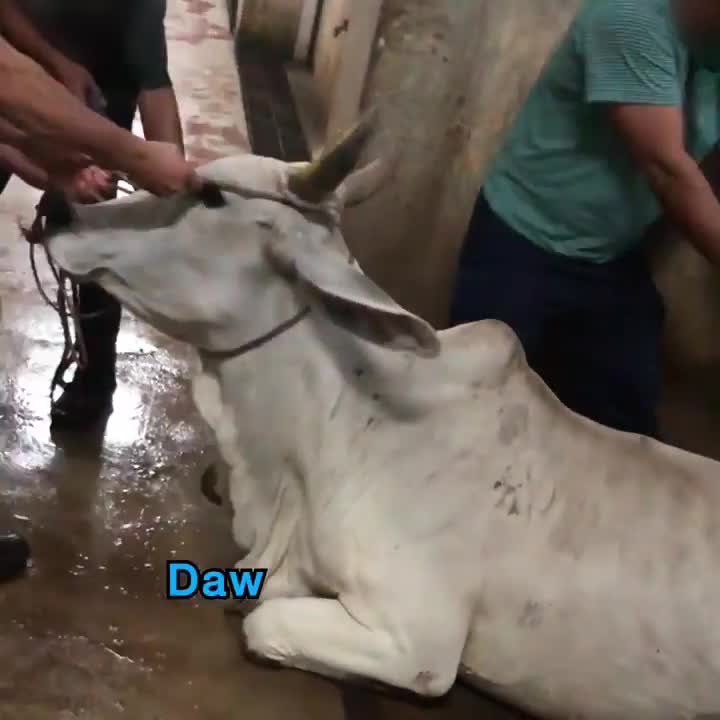






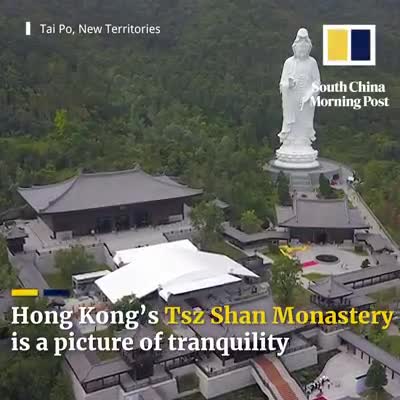

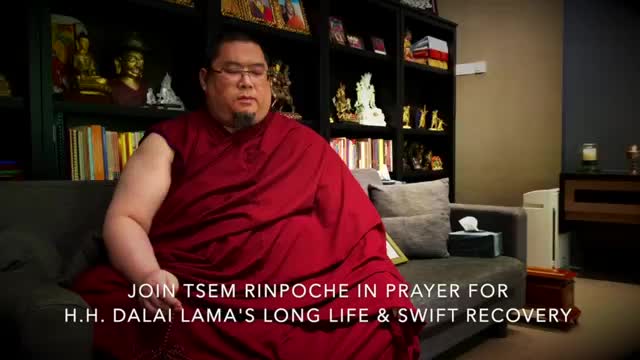

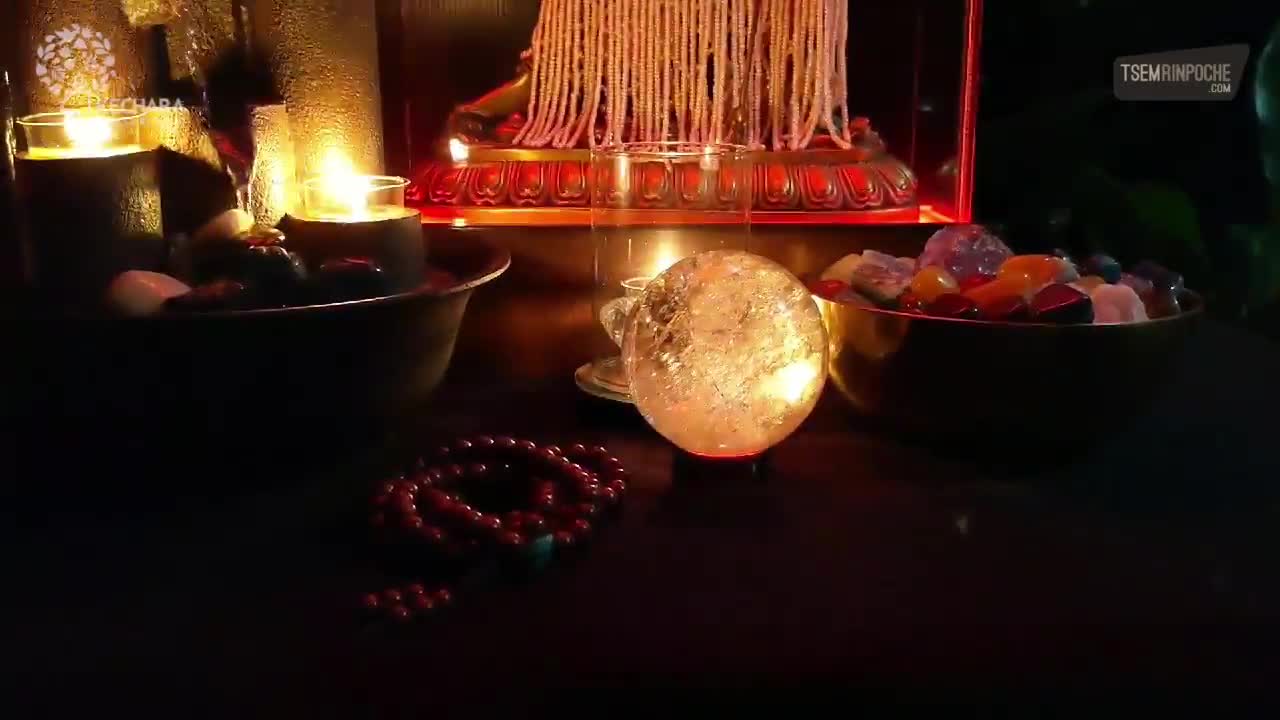

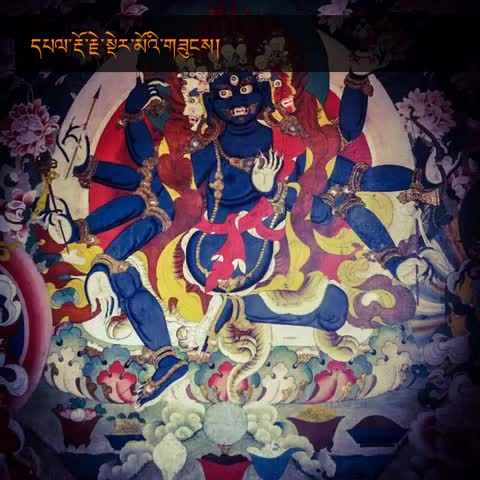
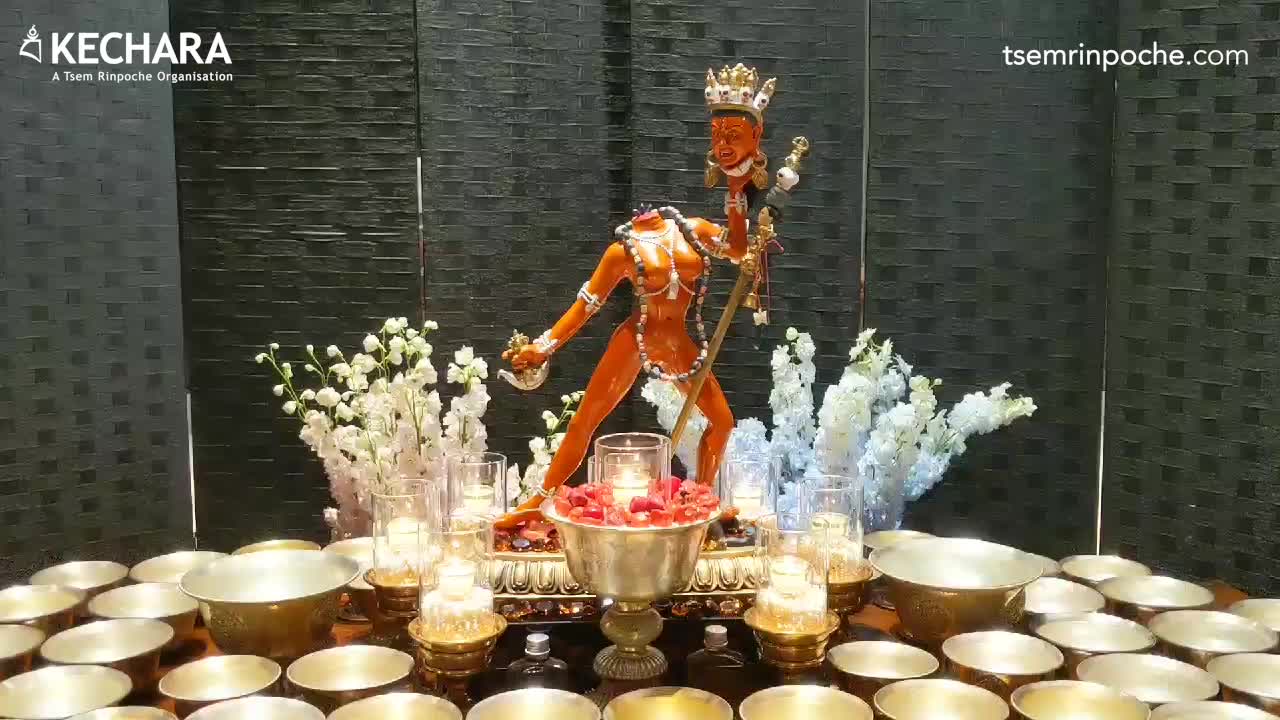













































































Offerings are the formal religious expression of the fundamental Buddhist virtue of giving. The offering is not because the Buddhas need it or want it. The offering is for us, an opportunity to create merit and good karma. The activity of offering is a remedy for our attachments and greed. In Buddhist doctrine, the accumulation of merit leads to higher rebirth, and eventually to release from the sufferings of cyclic existence. We must be able to give to a superlative degree, with correct motivation.
Profound notes on offerings by Panchen Ötrul Rinpoche is a great help for us. Its very beneficial for us to understand the significance of making offerings to the Three Jewels.
Thank you Rinpoche for this profound post .
In Buddhism, symbolic offerings are made to the Triple Gem, giving rise to contemplative gratitude and inspiration. Offerings such as objects such as a lit candle or butter lamp, burning incense, flowers, food, fruit, water or drinks. Each material offerings is imbued representing each different symbolic meanings . Example the lighting of a candle or an butter lamp represents the light of wisdom illuminating the darkness of ignorance while the burning of incense represents the fragrant scent of morality and so on.
Great knowledge and teachings from this post , explaining with details the importance of offerings.
Thank you Rinpoche for this sharing.
Thank you Rinpoche for sharing this insight and profound knowledge of the importance of offerings. I am glad to know and
to understand its purpose and meaning much better. Giving and offering with the right motivation to collect more merits and not the recipients. It’s good to go through all these notes so as we can understand how to visualised and offer to the Buddhas. Offering to Buddhas is one of the way to collect merits
Thank you Rinpoche for sharing this article. It is so important for us to understand the reason and meaning of offering. Many times people would literally think that making offering means to benefit the recipients but in Buddhism the actions has so much more benefits and deeper meaning. We have to understand that Buddha do not need our offering but instead it is us that needed to make offering to the Three Jewels in order for us to collect merits and creating the causes for us to practise and learn dharma. Offering to Buddha is also a way for us to practise mind transformation.
The Buddha was very compassionate to teach the method to create vast seas of merits in order to support our quest for spiritual attainments.
The motivation of making offering is very key and it is explained very clearly here how one should set one’s motivation.
Thank you Rinpoche for sharing, make offering to Buddhas is one of the way to collect merits but we must have the right motivation. Just a simple step, practice of “Giving” and no hope any rewards or any prizes after this, to be more generosity.
My dear Lama
I am translating this for lamatsongkhapa.com. In fact there are several interesting materials recently updated to the website. Just want you to know that I am not forgetting my promise and your instruction to expand the website.
Much love and care
Valentina
A small incident happened this week that made me realized that “working in dharma” is actually the practice of ‘Giving’. Whenever we talk, actions we took and how our mind thinks – all equates to how we practice dharma with our Body, Speech and Mind.
How well we do our work determines how well we’ve learned and put dharma into practice. The more we give up our personal time and increase effort, the more we plant seeds to receive more in our future lives and more Merits earned. This is a WOW for me!
How precious and brilliant are Rinpoche’s methods to help us walk the path to enlightenment in Kechara (we are so fortunate)… Thank you with folded hands! I love this article and I would like to thank the blog researcher who worked on this also. Very, very grateful and excellently written!
Thank you for the post Rinpoche. It provided a lot of information and cleared up some uncertainties I had regarding visualizations. As I read the article, it occurred to me that Rinpoche is always giving things and forever offering up one thing or another to so many people. From statues, to thangkas, pictures, Rinpoche’s time, dharma, knowledge, care, wisdom, support, prayers, encouragement, food, hope (even lottery tickets), and even Rinpoche’s health and the list goes on. In fact, Rinpoche has given an entire life for the benefit of others. It is not something I or anyone else should take for granted. And i guess what Rinpoche wants in return is for me and for us to turn away from our selfish-centred ways and conduct our lives as living offerings to the Buddhas.
Thank you very much, Rinpoche, for sharing this precious teaching.